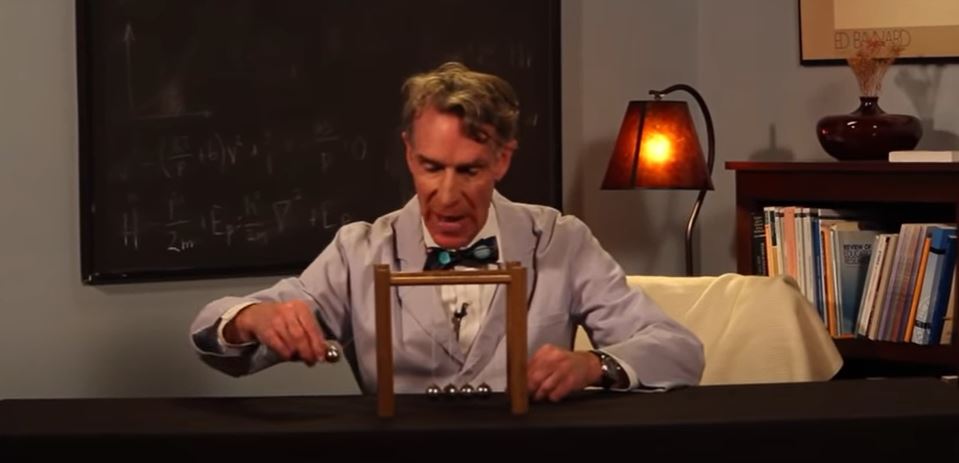Standards
Science – SC.6.P.11.2
Explore the Law of Conservation of Energy by differentiating between potential and kinetic energy. Identify situations where kinetic energy is transformed into potential energy and vice versa.
Language Arts – LAFS.6.RL.1.2
Determine a theme or central idea of a text and how it is conveyed through particular details provide a summary of the text distinct from personal opinions or judgments.
Mathematics – MAFS.6.RP.1.2
Understand the concept of a unit rate a/b associated with a ratio a:b with b ≠ 0, and use rate language in the context of a ratio relationship.
Mathematics – MAFS.6.NS.3.8
Solve real-world and mathematical problems by graphing points in all four quadrants of the coordinate plane. Include use of coordinates and absolute value to find distances between points with the same first coordinate or the same second coordinate.
Big Idea(s)
What is energy and forms can it take? What is energy transformation? Using the law of conservation of energy, transformations such as chemical to electrical can be explored in a many ways
There are three simple ways to conserve energy:
- Use energy efficiently. Modern refrigerators use much less energy than older ones. Compact fluorescent and LED lights burn less juice than incandescent bulbs.
- Embrace alternative forms of energy. A passive solar room or photovoltaic outdoor lighting takes advantage of free energy from the sun.
- Stop wasting energy. Fix dripping faucets. Plug leaks where cold air can seep in. Turn off appliances when you’re not using them.
Essential Question
Can you find ways to use energy wisely?
Vocabulary
Pendulum • Frequency • Potential Energy • Kinetic • Energy Conservation • Law of Conservation of Energy • Vibration • Speed • Habits • Behavior • Efficiency • CFL (compact fluorescent lamp) • LED (light emitting diode)
Background Information
Lesson 1:
Pendulums swing back and forth in a regular pattern. Each back and forth movement is called a vibration. The time it takes for one vibration is called a period. The Law of Conservation of Energy states that energy cannot be created or destroyed. In fact, it states that energy can only change its form to another. A good example would be converting friction to kinetic or kinetic to thermal. Something we may be familiar with is throwing a ball in the air and/or how everything that goes up comes down.
When Einstein, the famous scientist, came up with the formula E=mc2; it confused many with its mass-energy equation. However; the formula actually states that mass can be converted to energy and vice versa. In reality it demonstrates that mass and energy are actually different forms of the same thing.
Lesson 2:
Energy conservation is the act of using less energy by adjusting your habits and behaviors. Conservation is achieved by using your current technology and use less of it or at different times in order to maximize savings.
Energy efficiency is using technology to perform the same function while requiring less energy to perform the same function.
Conservation ideas include turning your refrigeration down, cleaning or replacing filters as recommended, air drying clothes, cutting down on air leaks in your home and keeping your house a little warmer in the summer and cooler in the winter or turning your ceiling off when you leave your home.
Efficiency ideas include installing CFL or LED bulbs, upgrading your appliances, and using a programmable thermostat.
Guiding Questions
Lesson 1:
- What is energy?
- What is the relationship between potential energy and kinetic energy?
- How does the pendulum depict conservation of energy?
- What affect does weight have on the number of times the pendulum swings?
Lesson 2:
- What can you do at home to save money on energy?
- Will solar panels make a difference in homes in the future?
- What is the difference between energy conservation and energy efficiency?
Math Mania
Essential Question:
Mr. Smith wanted to place rooftop solar panels on his home. He decided to read about how solar panels work and if they truly conserve energy. During his research, he read that almost 40% of all new electricity-generating capacity in the United States came from the Sun
If 40% of all new electric-generating energy come from the sun; what percent of consumers would need to have some type of solar panels in their home to show that at least half of the homes in the US are creating electric-generating energy from the Sun?
The correct response is 50%
Instructional Sequence
- Lesson: Paperclip Pendulum – CTE-ENGY.68.GENRL.04.06
- Lesson: Energy Conservation…. It Costs Watt? – CTE-ENGY.68.GENRL.04.06
- Math Mania – MAFS.6.RP.1.3
Fun Facts
Did you know…
- Every time you open the refrigerator door, up to 30 percent of the cold air can escape?
- An energy-smart clothes washer can save more water in one year than one-person drinks in an entire lifetime?
- Approximately, 75% of electricity used to power home electronics is consumed while the products are off?
- Televisions consume a lot of energy when turned off; keep them unplugged when not in use?
Inquiry Type
- Structured Inquiry
- Open Inquiry
- Class/Group Activity
- Experiment
Teacher Resources
Lesson 1: Bill Nye talks about how pendulums work

Lesson 2: Use your Interactive Board for students to review and have an understanding of an electric bill.
https://www.fpl.com/rates/understand-bill.html
Extensions:
Project Based Learning Activity
